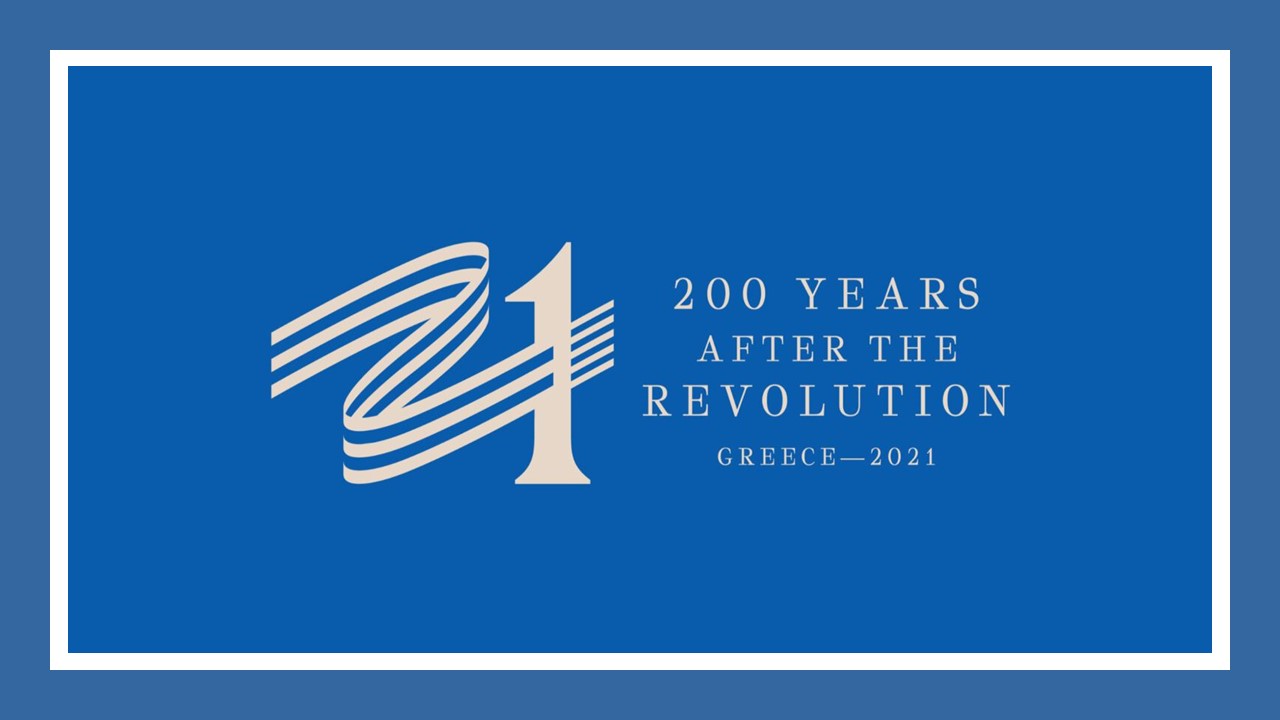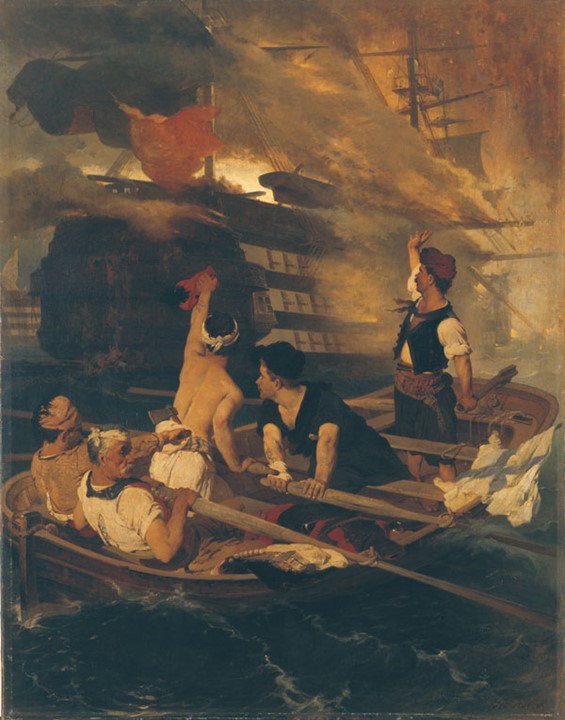
Kanaris Burning the Turkish Flagship, 1873, oil on canvas, 143×109 cm, Averoff Gallery, Metsovo, Greece https://www.averoffmuseum.gr/kanaris-burning-the-turkish-flagship/?lang=en
“Mais le bon Canaris, donc un ardent sillon / Suit la barque hardie, / Sur les vaisseaux qu’il prend, comme son pavillon, / Arbore l’incendie ! But good Kanaris, whose daring boat / Is followed by a burning wake, / On the vessels he seizes, as his ensign, / Displays the blaze!” Writes Victor Hugo inspired by the daring deeds of Konstantinos Kanaris (anglicised as Constantine Canaris), distinguished as a brave fire ship captain. In 1873, Nikiforos Lytras painted Kanaris Burning the Turkish Flagship, honouring the great man. https://poesie.webnet.fr/lesgrandsclassiques/poemes/victor_hugo/canaris and https://www.crwflags.com/fotw/flags/fr_canar.html
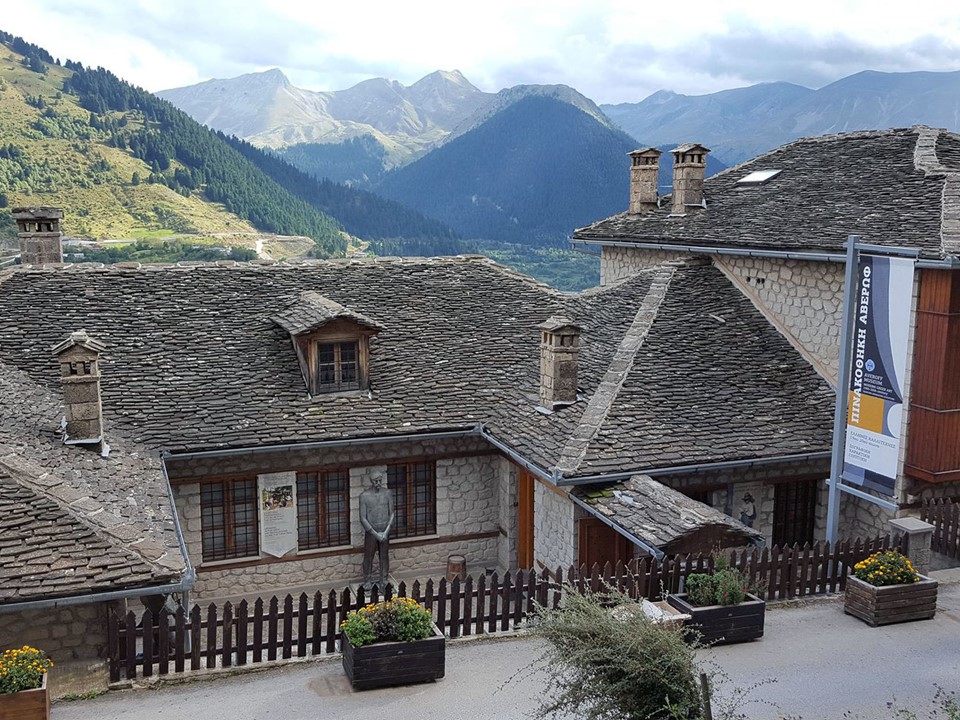
Every time I travel to Metsovo, in the Epirote mountains of Pindos, in Northern Greece, I visit the Averoff Gallery and stop in front of Nikiforos Lytras’s painting Kanaris Burning the Turkish Flagship. You cannot miss it… It is one of the most captivating 19th-century Greek paintings. https://www.averoffmuseum.gr/
Kanaris Burning the Turkish Flagship is an amazing departure from what Nykiforos Lytras studied in the Münchner Akademie der Bildenden Künste under the tutelage of Karl Theodor von Piloty (1826-1886). An influential Art School, the Münchner Akademie, attracted and trained artists from around the world to become leading painters, able to combine in their style, academic realism, baroque colourism and dark chiaroscuro. The artists of the Akademie were committed to monumental history paintings, landscapes, ethnography, portraits and still life. Naturalism in its depiction of human emotions was not among the School’s greatest artistic pursuits. http://www.artmag.gr/art-history/art-history/item/270-i-sxoli-you-monaxou
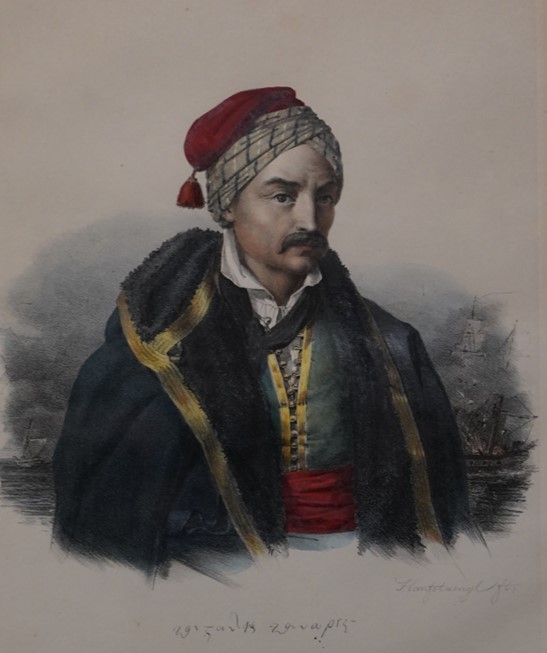
Greek and Philhellene Fighters in the Greek Revolution of 1821, Portraits of the German officer and Philhellene Karl Krazeisen
This is a rare series of the lithographs of Krazeisen, which are hand-painted.
https://www.eefshp.org/en/portfolio-item/konstantinos-kanaris-1793-1877/
Lytras’s painting on the heroic deed by Konstantinos Kanaris is a historic painting with a twist! The artist moves away “from the romantic tendency that prevailed in the School of Piloty to a more naturalistic one in which the genre element played the dominant role.” According to the description provided by the Averoff Museum “Lytras` anthropocentric painting… was not concerned so much with the historical event per se. More so it was the projection of the heroic act carried out by brave persons worthy of emulation. The flaming ship is thrust into the distance to form the backdrop for the human action that is played out on a plane close to the viewer. Thus, in contrast to the ambiguous treatment of the background, where the ship disappears half-hidden by the smoke, the realistic rendering of the Psarians with Kanaris in the boat gives the work the immediacy and truth that interested the artist.” https://www.averoffmuseum.gr/kanaris-burning-the-turkish-flagship/?lang=en
Nikiforos Lytras, the painter of Kanaris Burning the Turkish Flagship in Metsovo, was born in Pyrgi, on the Cycladic island of Tinos, the son of a marble sculptor. An exceptional talent, Lytras studied at the Athens School of Art from 1850 until 1860 and then, as the recipient of a state scholarship, he continued his studies at the Munich Academy, in the class of Karl von Piloty. In 1866 Lytras was back in Greece and was appointed professor at the Athens School of Fine Arts, a position he held for 38 productive years. A conscientious teacher, but interested to experience new ideas and always open to new trends, Nikiforos Lytras became the leading Greek artist of his time, popular with the people and honoured by his students and fellow artists.
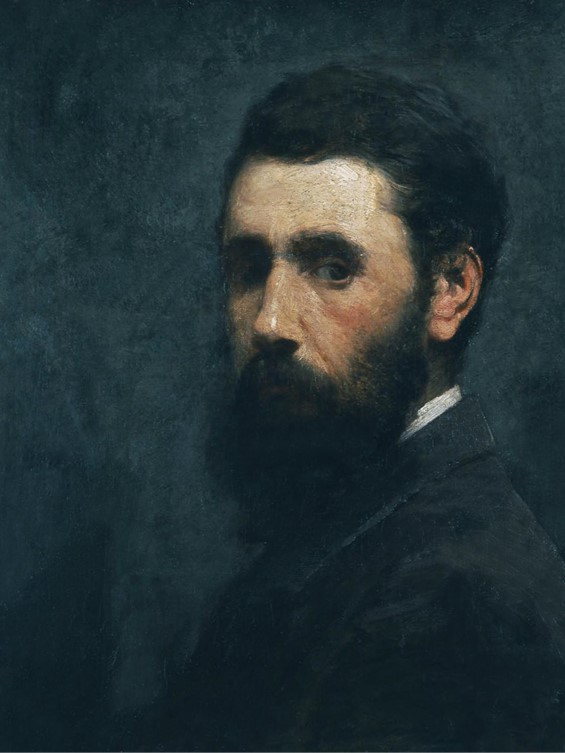
Self-Portrait, 19th century, oil on canvas, 51,5 x 43,5 cm, National Gallery of Athens
There are two paintings on the theme of Kanaris Burning the Turkish Flagship. The earliest, chronologically, was painted by Nikiforos Lytras and today is exhibited in the Averoff Museum at Metsovo, one of my favourite Art Museums in Greece. The second painting, by Ivan Konstantinovich Aivazovsky, was painted in 1881 and is part of the E. Koutlidis Collection and is exhibited in Athens at the National Gallery. For a Student “Compare and Contrast” Activity, paintings, please… Check HERE!
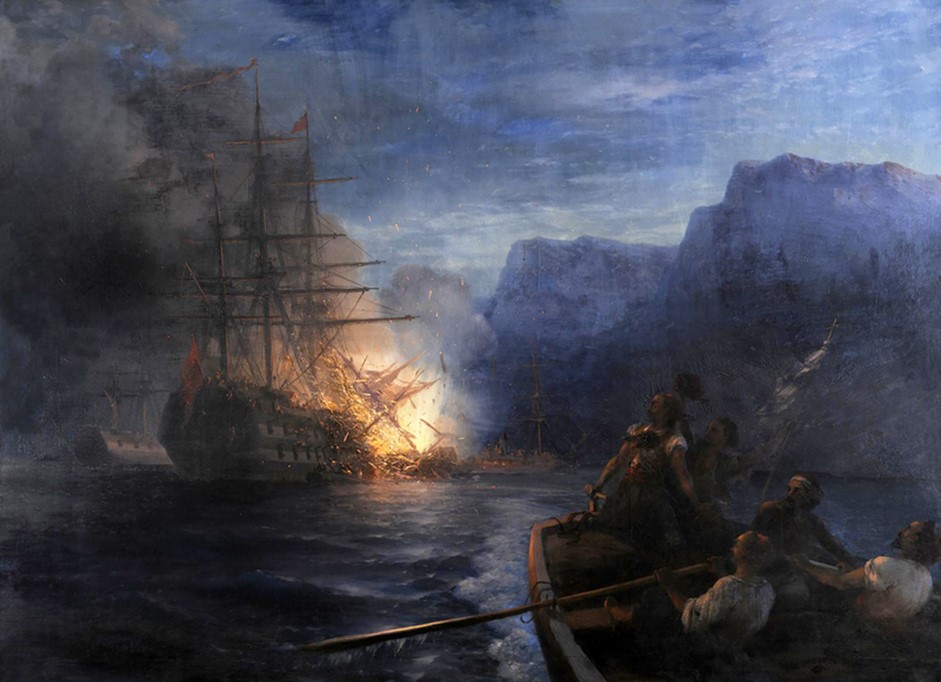
The Burning of the Turkish Flagship, 1881,oil on canvas, 162×223 cm, National Gallery of Athens https://commons.wikimedia.org/wiki/File:The_Burning_of_the_Turkish_Flagship_by_Kanaris_-_Ivan_Aivazovsky,_1881.png
If you wish to learn more about the Greek War of Independence and the Bicentennial Celebrations in 2021, please VISIT the official Greece 1821-2021 Bicentennial site http://www.greece2021.gr, Twitter, https://twitter.com/Greece_2021, Facebook, https://www.facebook.com/Greece2021/, and Instagram, https://www.instagram.com/greece2021/?hl=el
